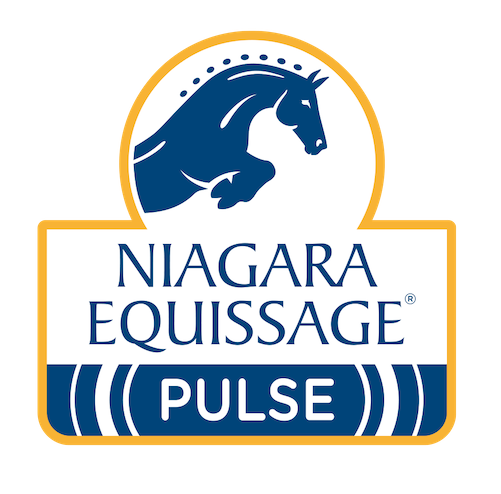Pedal Osteitis
Pedal Osteitis is inflammation of the distal phalanx (pedal bone).
The condition is characterized by demineralization (thinning) of the pedal bone resulting from an autoimmune response triggered by long term inflammation.
Pedal Osteitis can be categorized as;
- Septic
- Non-septic
Septic indicates the pedal osteitis was caused by an infection (e.g. resulting from a puncture wound or abscess) that generated long term inflammation.
Non-septic pedal osteitis is often the result of repeated, concussive trauma to the sole of the hoof. The bruising and consequent damage to the bottom on the hoof generates an inflammatory response which later leads to the demineralization on the pedal bone characterizing the condition.
A horse with either septic or non-septic pedal osteitis will show lameness that is usually bilateral. Lameness will be present at all gaits and will worsen the longer a horse continues to work.
Can Niagara Equissage help with Pedal Osteitis?
Yes it can.
However, Niagara Equissage treatment needs to go hand in hand with other measures in order to provide maximum benefit. For example the cause of the condition needs eliminating whether that is a deep-seated abscess or work on hard ground. Niagara Equissage can assist with both septic and non-septic pedal osteitis.
Niagara Equissage is well-established as a therapy tool to aid reduction of inflammation; remove the inflammation and the demineralization process stops. It is also considered by some that the weakened bone can strengthen again (provided it is adequately nourished) in the same way as a broken bone heals to fix the break provided that the horse is not exposed to negative triggers such as concussion.
The horse with pedal osteitis will not weight bear correctly on the affected foot, affecting the frog which plays an important role as a foot pump, relying on pressure to function correctly. This in turn has a knock-on effect on the lymphatic system.
There is very positive feedback on the treatment of pedal osteitis with Niagara Equissage attributable to the fact that cycloidal massage is deep and reaches the extremities of the foot opening up the vascular vessels so that the area receives replenished blood supplies.
The effects of a 20 minute Niagara Equissage treatment continue in the body for several hours thus the warmth generated by the muscular activity continues to work at keeping vessels dilated for considerable length of time.
Application
For pedal osteitis treatment, use the Back Pad in conjunction with the Hand Unit, ideally to the base of the foot. If the horse is not comfortable enough to allow this then it can be held against the hoof. Alternatively the Leg Boot can be used.
Although the aim is to reduce inflammation, the vessels within the foot are minute and the hoof wall does not allow for any expansion. Therefore a lower setting for both the Back Pad and Hand Unit is recommended so as not to overly congest the area as supplies in are via larger channels than the channels that remove the waste materials. A longer, more sustained, gentle approach is far more beneficial than a shorter, quicker treatment session. Whilst the Back Pad can remain in situ for 20-30 minutes, 10 minutes with the Hand Unit will suffice.

Testimonials
See All- Kentucky Derby Winning Trainer & Trainer of Horse of the Year, Zenyatta
"My Niagara Equissage is in use 4 hours every morning treating many horses for many things, including ALL horses racing that day. I find using the Niagara Equissage on tendons and suspensors removes soreness totally."
- Show Jumping Trainer & Competitor
"The Niagara Equissage helps my horses perform to the best of their ability and be more consistent. It also helps them to recover quickly from competetion."
- Racehorse Trainer in Ireland
My entire yard has been on Brandes Formula for the past year. It is an excellent equine supplement that has helped to keep my horses healthy throughout the season. I would highly recommend Brandes Formula!

